Family: Tenthredinidae
Family common name: common sawflies
Subfamily: Nematinae
Tribe: Nematini
Genus: Euura Newman, 1837
Subgenera: none
The Tenthredinidae are the most species-rich family and are found throughout the world, in all continents but Antarctica. They are known as the “common sawflies.” They can generally be recognized by a cylindrical body and long, segmented antennaeantenna:
the sensory organ emerging from the front of the head, usually between the compound eyes and above the clypeus; includes the flagellum, scape and pedicel
 . Otherwise, they come in a variety of colors, sizes, and forms (Goulet 1992Goulet 1992:
. Otherwise, they come in a variety of colors, sizes, and forms (Goulet 1992Goulet 1992:
Goulet H. 1992. The genera and subgenera of the sawflies of Canada and Alaska: Hymenoptera. Symphyta. The insects and arachnids of Canada. Part 20. Agriculture Canada Publication.).
Nematinae is the second-largest subfamily of Tenthredinidae, with over 1250 species (Prous et al. 2014Prous et al. 2014:
Prous M, Blank SM, Goulet H, Heibo E, Liston A, Malm T, Nyman T, Schmidt S, Smith DR, Varing;rdal H, Viitasaari M, Vikberg V, and Taeger A. 2014. The genera of Nematinae (Hymenoptera, Tenthredinidae). Journal of Hymenoptera Research 40: 1-69. " target="_blank">https://doi.org/10.3897/JHR.40.7442). They are most diverse in northern Eurasia and North America; only a few species occur in the Southern Hemisphere. Nematinae sawflies have a variety of feeding habits including external leaf feeding, leaf mining, and gall forming, and feed on a variety of hosts (Smith 2003bSmith 2003b:
Smith DR. 2003b. A Synopsis of the sawflies (Hymenoptera: Symphyta) of America south of the United States: Tenthredinidae (Nematinae, Heterarthrinae, Tenthredininae). Transactions of the American Entomological Society 129 (1): 1-45.).
The Nematinae have been subject to numerous revisions in recent years. As of 2021, there are no comprehensive keys to many of the North American species of Nematinae (Prous et al. 2014Prous et al. 2014:
Prous M, Blank SM, Goulet H, Heibo E, Liston A, Malm T, Nyman T, Schmidt S, Smith DR, Varing;rdal H, Viitasaari M, Vikberg V, and Taeger A. 2014. The genera of Nematinae (Hymenoptera, Tenthredinidae). Journal of Hymenoptera Research 40: 1-69. " target="_blank">https://doi.org/10.3897/JHR.40.7442). Because of changing taxonomy and extreme variability in morphology, identifying genera and species in the Nematinae may be more challenging than in other subfamilies of Tenthredinidae. For this reason, knowing the host or behaviors of a specimen can be extremely helpful for identification within this subfamily.
Euura is an extremely species-rich genus with a widespread distribution. In recent years, several genera including Amauronematus, Pontania, Pachynematus, Pikonema, Phyllocolpa, and many species of Nematus were collapsed into Euura based on molecular phylogenetics. This makes the genus especially difficult to key based on morphology (Prous et al. 2014Prous et al. 2014:
Prous M, Blank SM, Goulet H, Heibo E, Liston A, Malm T, Nyman T, Schmidt S, Smith DR, Varing;rdal H, Viitasaari M, Vikberg V, and Taeger A. 2014. The genera of Nematinae (Hymenoptera, Tenthredinidae). Journal of Hymenoptera Research 40: 1-69. " target="_blank">https://doi.org/10.3897/JHR.40.7442).
Euura are generally small (<10mm), but have a variety of colors and forms. Many species are gall-inducers, so if the larval feeding habits are known, this can be a more useful character for identification than the external morphology (Prous et al. 2014Prous et al. 2014:
Prous M, Blank SM, Goulet H, Heibo E, Liston A, Malm T, Nyman T, Schmidt S, Smith DR, Varing;rdal H, Viitasaari M, Vikberg V, and Taeger A. 2014. The genera of Nematinae (Hymenoptera, Tenthredinidae). Journal of Hymenoptera Research 40: 1-69. " target="_blank">https://doi.org/10.3897/JHR.40.7442).
There are 658 described species worldwide. About 257 species occur in North America (Taeger et al. 2018Taeger et al. 2018:
Taeger A, Liston AD, Prous M, Groll EK, Gehroldt T, and Blank SM. 2018. ECatSymmdash;Electronic World Catalog of Symphyta (Insecta, Hymenoptera). Program version 5.0 (19 Dec 2018), data version 40 (23 Sep 2018). Senckenberg Deutsches Entomologisches Institut (SDEI), Muuml;ncheberg. https://sdei.de/ecatsym/ Accessed: 28 Jan 2020.).
Subfamily characters
 cellcell:
cellcell: 1M slightly constricted apically; veins M and 1m-cu convergent toward the stigmastigma:
1M slightly constricted apically; veins M and 1m-cu convergent toward the stigmastigma: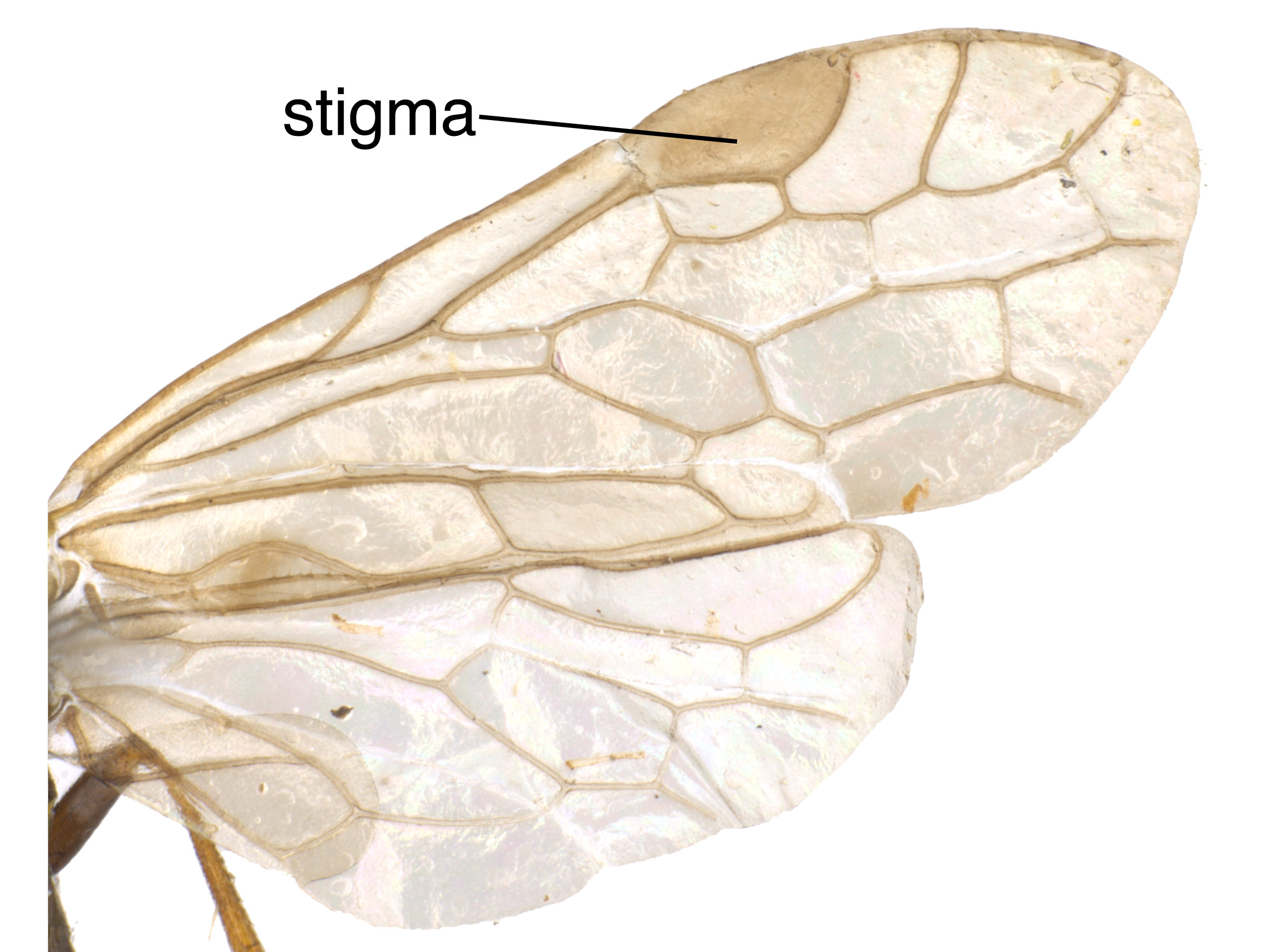 (Goulet 1992Goulet 1992:
(Goulet 1992Goulet 1992:Genus characters
Euura is very morphologically diverse, so some characters only apply to some species:
 usually deeply emarginated (Prous et al. 2014Prous et al. 2014:
usually deeply emarginated (Prous et al. 2014Prous et al. 2014: veins M and Rs+M relatively widely separated on veinvein:
veins M and Rs+M relatively widely separated on veinvein: R (Goulet 1992Goulet 1992:
R (Goulet 1992Goulet 1992: vein 2A+3A incomplete and straight (Prous et al. 2014Prous et al. 2014:
vein 2A+3A incomplete and straight (Prous et al. 2014Prous et al. 2014: vein 2r-m sometimes absent (Prous et al. 2014Prous et al. 2014:
vein 2r-m sometimes absent (Prous et al. 2014Prous et al. 2014: vein 2A meeting 1A; basalbasal:
vein 2A meeting 1A; basalbasal: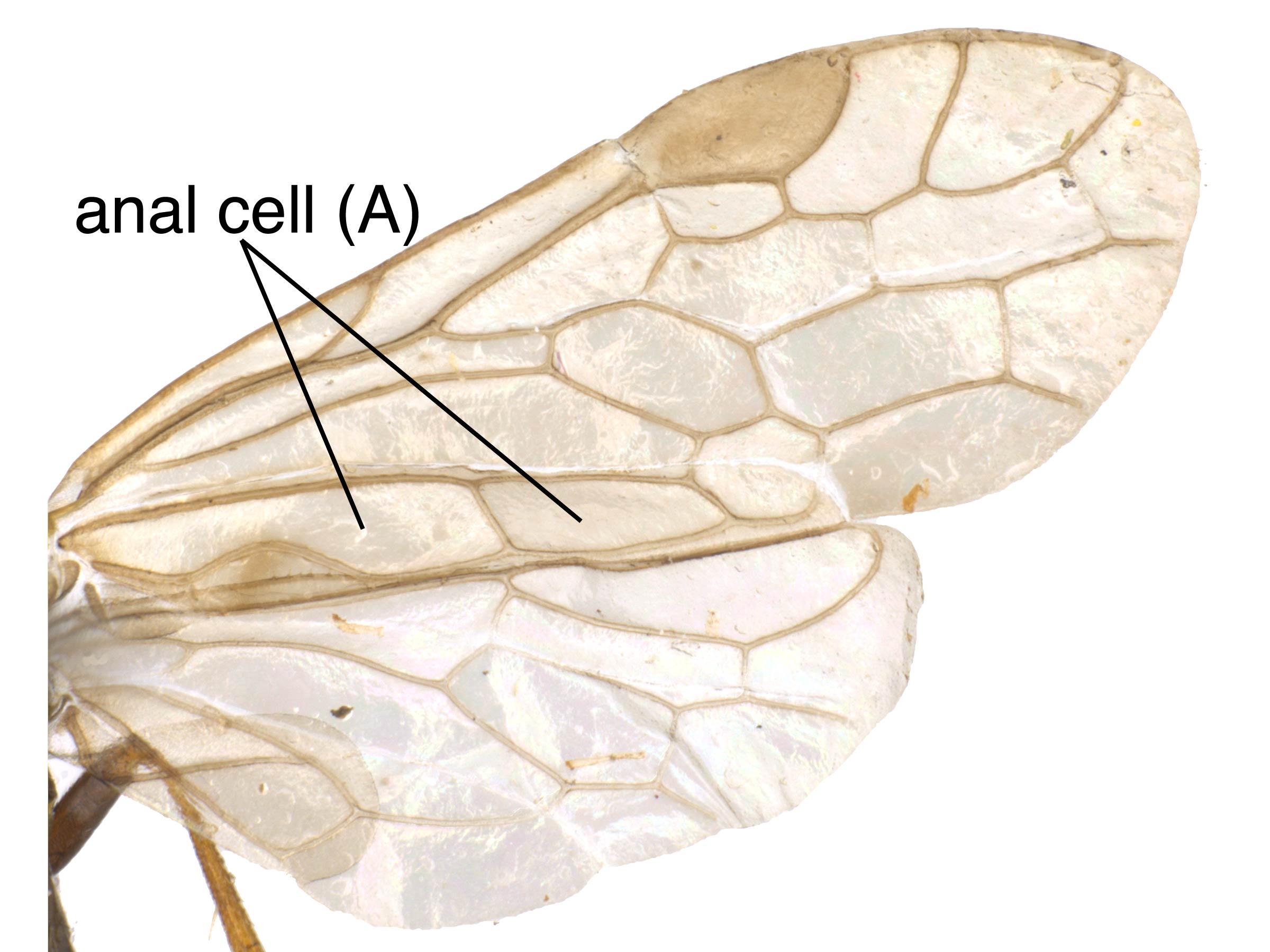 present (Prous et al. 2014Prous et al. 2014:
present (Prous et al. 2014Prous et al. 2014: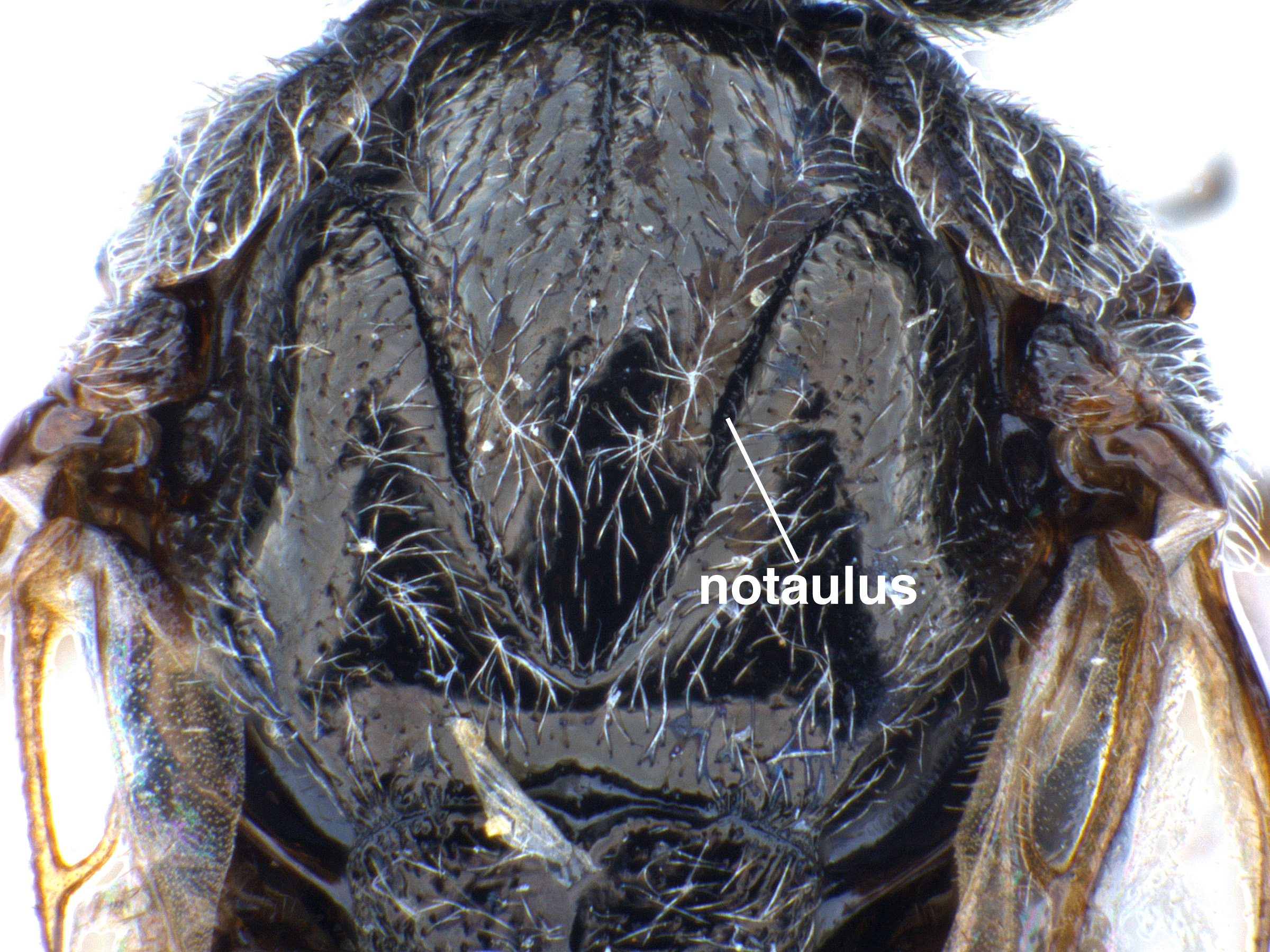 clearly outlined (Prous et al. 2014Prous et al. 2014:
clearly outlined (Prous et al. 2014Prous et al. 2014: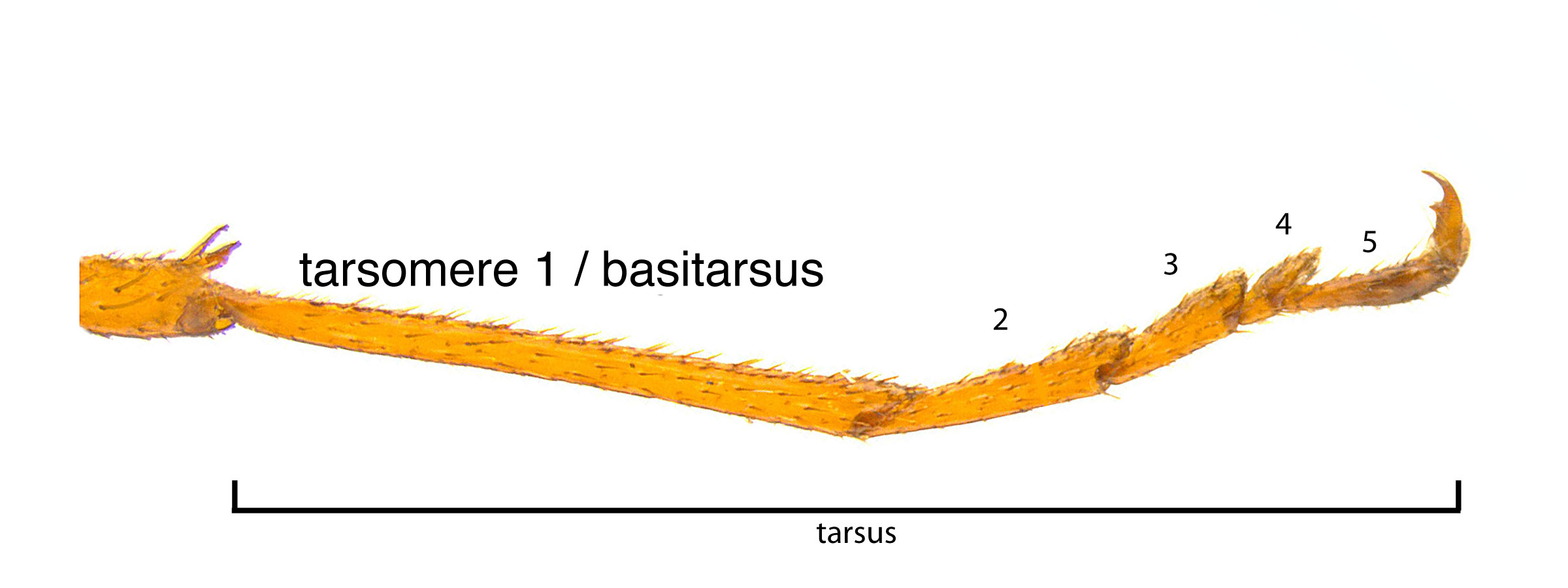 about 1–1.5X the width of the second (Prous et al. 2014Prous et al. 2014:
about 1–1.5X the width of the second (Prous et al. 2014Prous et al. 2014: usually with long inner tooth (Prous et al. 2014Prous et al. 2014:
usually with long inner tooth (Prous et al. 2014Prous et al. 2014:Euura has several shared morphological characters with Nematus and Pristiphora, and in some cases cannot be easily distinguished. Together, these three genera can usually be distinguished from other Nematinae by the lack of fore wingfore wing:
the anterior wing of each pair of wings; usually the largest wing of the pair
 vein 2r-rs, incomplete veinvein:
vein 2r-rs, incomplete veinvein:
a tube-like, often darkened, structure on the wings
 2A+3A, and asymmetrical outer surfaces of the mandibles. Euura and Nematus can usually be distinguished from Pristiphora by the ovipositorovipositor:
2A+3A, and asymmetrical outer surfaces of the mandibles. Euura and Nematus can usually be distinguished from Pristiphora by the ovipositorovipositor:
the female organ that deposits eggs and is used to drill into plant tissue, located at the apex of the abdomen, made up of the lance and lancet
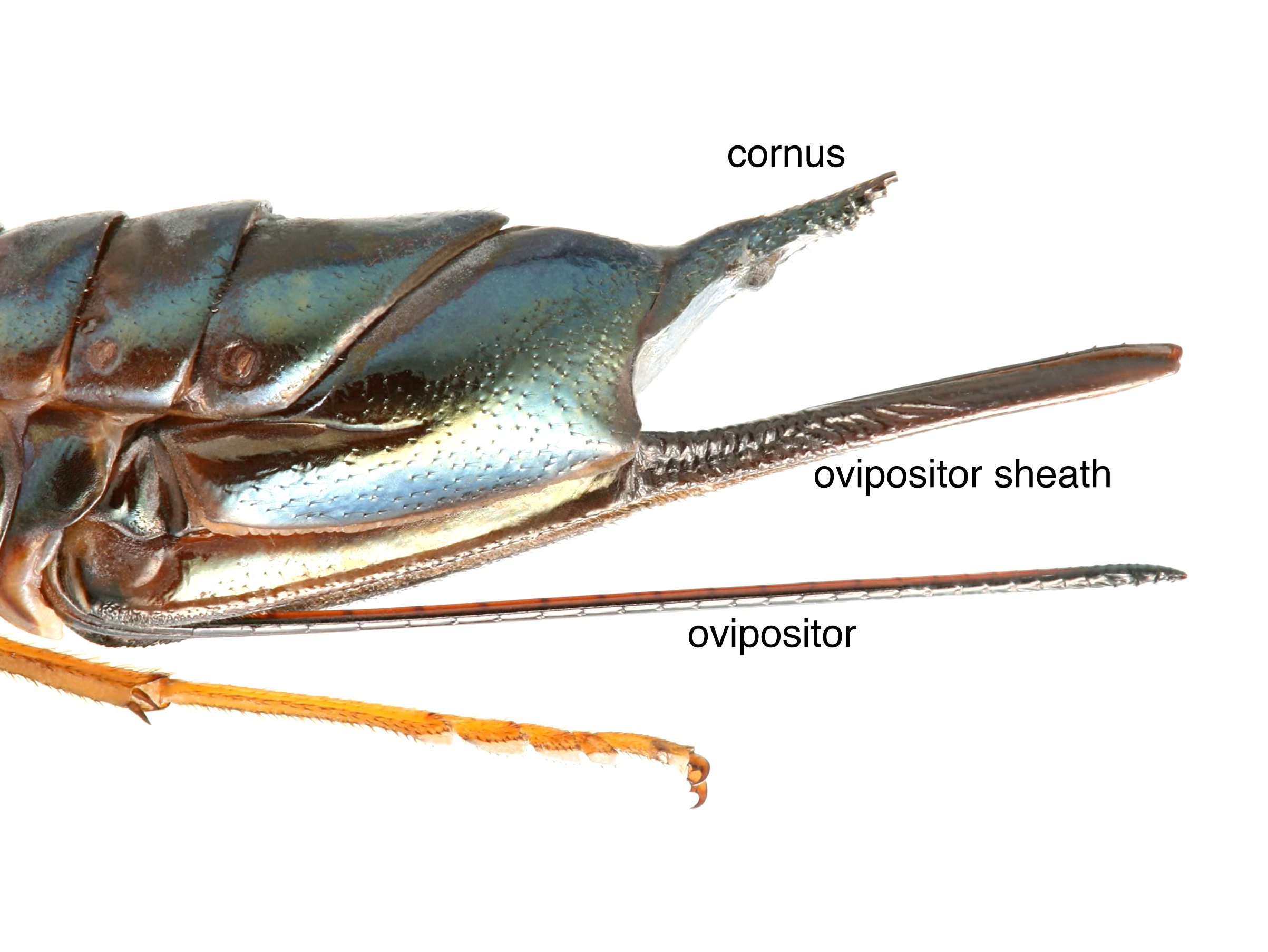 sheath evenly tapering toward the apexapex:
sheath evenly tapering toward the apexapex:
the end or most distal area of any structure
in dorsaldorsal:
of or on the top surface of the body or structure
view, long subapical tooth of the tarsal clawtarsal claw:
sharpened appendage emerging from the apex of the tarsus
 , emarginated clypeusclypeus:
, emarginated clypeusclypeus:
sclerotized area on the front of the head located between the antennal insertions and labrum
 , and fore wingfore wing:
, and fore wingfore wing:
the anterior wing of each pair of wings; usually the largest wing of the pair
 vein C not enlarged apically (Prous et al. 2014Prous et al. 2014:
vein C not enlarged apically (Prous et al. 2014Prous et al. 2014:
Prous M, Blank SM, Goulet H, Heibo E, Liston A, Malm T, Nyman T, Schmidt S, Smith DR, Varing;rdal H, Viitasaari M, Vikberg V, and Taeger A. 2014. The genera of Nematinae (Hymenoptera, Tenthredinidae). Journal of Hymenoptera Research 40: 1-69. " target="_blank">https://doi.org/10.3897/JHR.40.7442). Some species of Euura can be recognized by the lack of fore wingfore wing:
the anterior wing of each pair of wings; usually the largest wing of the pair
 vein 2r-m (Prous et al. 2014Prous et al. 2014:
vein 2r-m (Prous et al. 2014Prous et al. 2014:
Prous M, Blank SM, Goulet H, Heibo E, Liston A, Malm T, Nyman T, Schmidt S, Smith DR, Varing;rdal H, Viitasaari M, Vikberg V, and Taeger A. 2014. The genera of Nematinae (Hymenoptera, Tenthredinidae). Journal of Hymenoptera Research 40: 1-69. " target="_blank">https://doi.org/10.3897/JHR.40.7442). Some species of Euura have the ovipositorovipositor:
the female organ that deposits eggs and is used to drill into plant tissue, located at the apex of the abdomen, made up of the lance and lancet
 sheath deeply emarginateemarginate:
sheath deeply emarginateemarginate:
notched at the margin
and wide apically (i.e., the former Amauronematus (Pontopristia)), but these can be distinguished from Pristiphora by the deeply emarginateemarginate:
notched at the margin
clypeusclypeus:
sclerotized area on the front of the head located between the antennal insertions and labrum
 and long subapical tooth of the tarsal clawtarsal claw:
and long subapical tooth of the tarsal clawtarsal claw:
sharpened appendage emerging from the apex of the tarsus
 .
.
Euura ruyanus is a pest of willow in China. The multivoltinemultivoltine:
describing a life cycle with many generations per calendar year
 species pupates on the plant during the summer and in the soil in winter. The infested trees were seriously damaged by repeated feeding (Xingyu et al. 2007Xingyu et al. 2007:
species pupates on the plant during the summer and in the soil in winter. The infested trees were seriously damaged by repeated feeding (Xingyu et al. 2007Xingyu et al. 2007:
Xingyu W, Heng X, and Chaohui P. 2007. Biological characteristics and control of the sawfly, Nematus ruyanus . Plant Protection Beijing 33 (1): 102.).
Euura salicis also feeds on willow and is recorded as a pest in Turkey. Though the species is univoltineunivoltine:
describing an insect with a life cycle of one generation per year
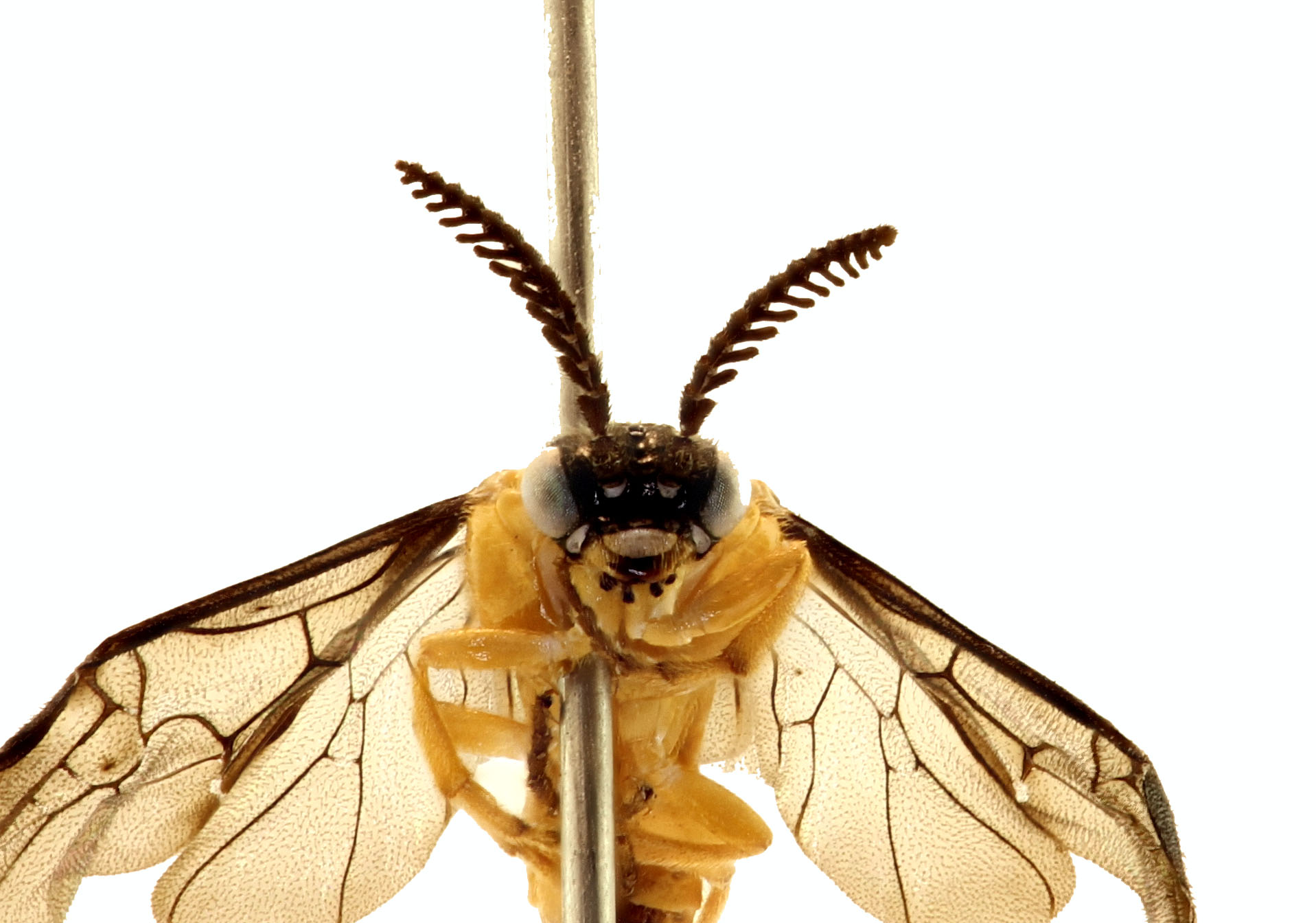 , the damage inflicted in one cycle can defoliatedefoliate:
, the damage inflicted in one cycle can defoliatedefoliate:
to elimate a sizeable portion of the foliage of a tree, either by feeding on the leaves or otherwise causing a severe decreae in photosynthetic ability
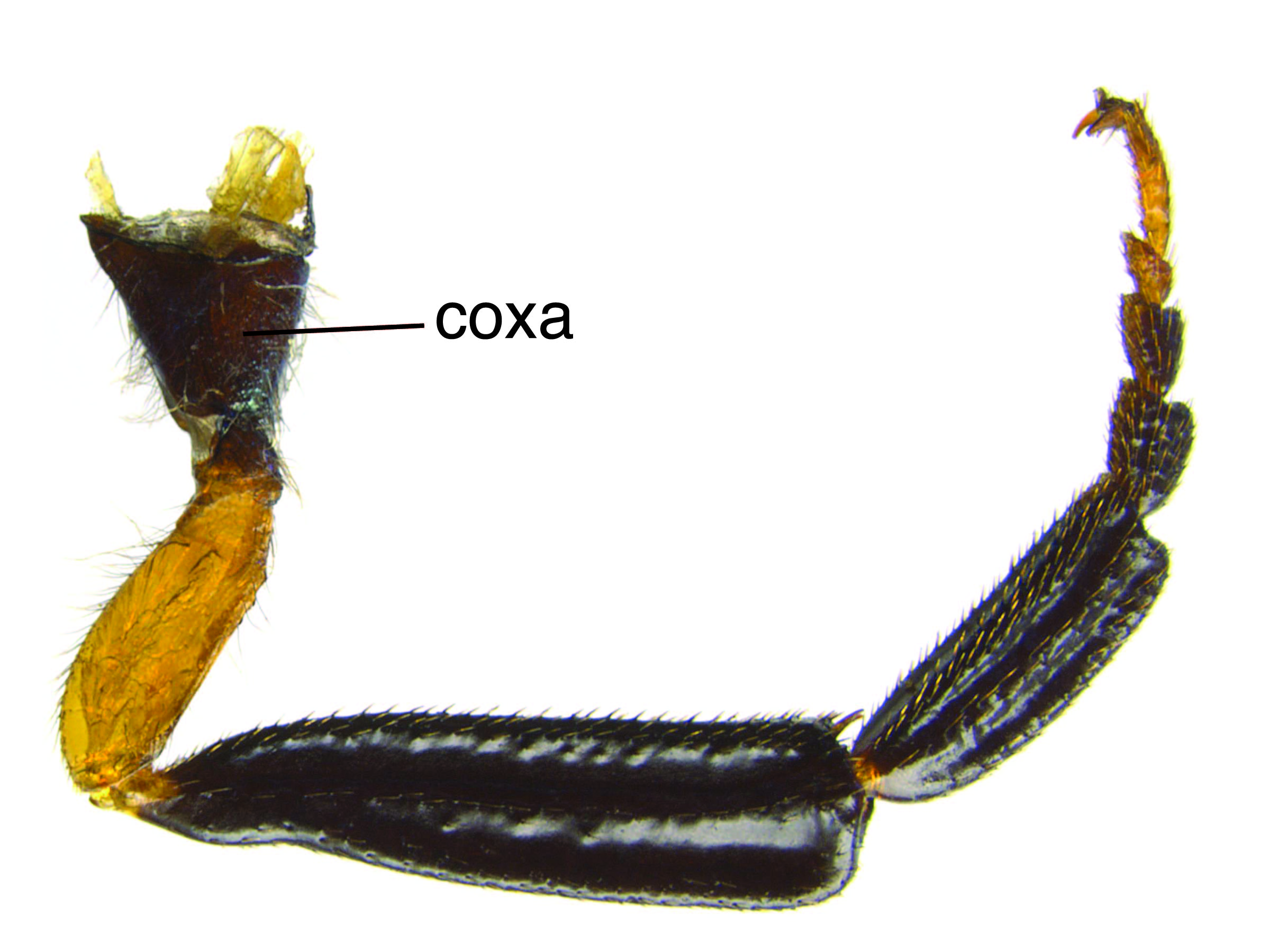 significant portions of the host (Çalmasur and Özbek 2006Çalmasur and Özbek 2006:
significant portions of the host (Çalmasur and Özbek 2006Çalmasur and Özbek 2006:
Çalmaşur Ö and Özbek H. 2006. A willow sawfly, Nematus salicis (Linnaeus) (Hymenoptera: Tenthredinidae), a new record and new pest of Salix spp. in Turkey. Proceedings of the Entomological Society of Washington 108 (1): 139–144.).
Euura desantisi is a serious pest of willow and poplar in a few countries in South America, Africa, and New Zealand. This multivoltinemultivoltine:
describing a life cycle with many generations per calendar year
 species appears to reproduce via parthenogenesis (where only females are produced from unfertilized eggs), and as such it is very successful and can spread quickly where hosts and climatic conditions are favorable (Ovruski and Smith 1993Ovruski and Smith 1993:
species appears to reproduce via parthenogenesis (where only females are produced from unfertilized eggs), and as such it is very successful and can spread quickly where hosts and climatic conditions are favorable (Ovruski and Smith 1993Ovruski and Smith 1993:
Ovruski SM and Smith DR. 1993. Descriptions of immature stages of Nematus desantisi (Hymenoptera: Tenthredinidae), a pest of Salicaceae in Argentina and Chile. Entomological News 104 (4): 153-160., Koch and Smith 2000Koch and Smith 2000:
Koch F and Smith DR. 2000. Nematus oligospilus Forster (Hymenoptera: Tenthredinidae), an introduced willow sawfly in the Southern Hemisphere. Proceedings of the Entomological Society of Washington 102 (2): 292-349.).
Euura mucronata is also considered a pest of willow in Europe, and is known to be unusually polyphagouspolyphagous:
feeding upon many different kinds of food (Urban 1993Urban 1993:
(Urban 1993Urban 1993:
Urban J. 1993. Pecked galls of the sawflies Euura laeta and Euura mucronata (Symphyta, Tenthredinidae) by birds. Lesnictviacute; 39 (5): 192-201., Nyman 2002Nyman 2002:
Nyman T. 2002. The willow bud galler Euura mucronata Hartig (Hymenoptera: Tenthredinidae): one polyphage or many monophages? Heredity 88: 288-295.). This species may be present in sub-arctic North America, specifically Alaska and Manitoba (Benson 1962Benson 1962:
Benson RB. 1962. Holarctic sawflies. Bulletin of the British Museum (Natural History) Entomology 12 (8): 379-409.).
Most Euura feed on species of Salix (willow) (Smith and Middlekauff 1987Smith and Middlekauff 1987:
Smith DR and Middlekauff WW. 1987. Suborder Symphyta. In: Stehr FW ed. Immature Insects. Kendall/Hunt Publishing Company. Vol. 1: 754 pp.). Other species feed on a variety of plants, including Rhododendron, Picea (spruce), grasses, and sedges (Goulet 1992Goulet 1992:
Goulet H. 1992. The genera and subgenera of the sawflies of Canada and Alaska: Hymenoptera. Symphyta. The insects and arachnids of Canada. Part 20. Agriculture Canada Publication., Smith 1974cSmith 1974c:
Smith DR. 1974c. Sawflies of the tribe Cladiini in North America (Hymenoptera: Tenthredinidae: Nematinae). Transactions of the American Entomological Society 100: 1-28.). Known host plant species include Robinia hispida (rose acacia), Robinia pseudoacacia (black locust) (Darling and Smith 1985Darling and Smith 1985:
Darling DC and Smith DR. 1985. Description and life history of a new species of Nematus (Hymenoptera: Tenthredinidae) on Robinia hispida (Fabaceae) in New York. Proceedings of the Entomological Society of Washington 87 (1) 225-230.), Trifolium wormskioldii (cows clover) (Poinar and Smith 2003Poinar and Smith 2003:
Poinar G and Smith DR. 2003. Food plant, life history notes, and distribution of Nematus atriceps (Marlatt) (Hymenoptera: Tenthredinidae). Proceedings of the Entomological Society of Washington 105 (3): 778-788.), Populus balsamifera (balsam poplar) (Zinovjev and Smith 2000aZinovjev and Smith 2000a:
Zinovjev AG and Smith DR. 2000a. Types of sawflies described in the genus Pontania A. Costa (Hymenoptera: Tenthredinidae) in the Illinois Natural History Survey. Proceedings of the Entomological Society of Washington 102 (4): 852-973.), Populus grandidentata (big tooth aspen), and Populus tremuloides (quaking aspen) (Zinovjev and Smith 1999Zinovjev and Smith 1999:
Zinovjev AG and Smith DR. 1999. Types and biological notes of the eastern North American sawflies of Pontania Costa and Phyllocolpa Benson (Hymenoptera: Tenthredinidae) described by Marlatt, Dyar, and Rohwer. Proceedings of the Entomological Society of Washington 101: 359-371.).
Life histories are varied in the genus Euura; some are gall formers, and some are external leaf feeders (Smith and Middlekauff 1987Smith and Middlekauff 1987:
Smith DR and Middlekauff WW. 1987. Suborder Symphyta. In: Stehr FW ed. Immature Insects. Kendall/Hunt Publishing Company. Vol. 1: 754 pp.). Species range in number of generations per year (Darling and Smith 1985Darling and Smith 1985:
Darling DC and Smith DR. 1985. Description and life history of a new species of Nematus (Hymenoptera: Tenthredinidae) on Robinia hispida (Fabaceae) in New York. Proceedings of the Entomological Society of Washington 87 (1) 225-230.).
Many species of Euura, including those previously placed in Pontania, are gall-inducers on stems, petioles, twigs, leaves, or buds (Smith and Middlekauff 1987Smith and Middlekauff 1987:
Smith DR and Middlekauff WW. 1987. Suborder Symphyta. In: Stehr FW ed. Immature Insects. Kendall/Hunt Publishing Company. Vol. 1: 754 pp., Zinovjev and Smith 1999Zinovjev and Smith 1999:
Zinovjev AG and Smith DR. 1999. Types and biological notes of the eastern North American sawflies of Pontania Costa and Phyllocolpa Benson (Hymenoptera: Tenthredinidae) described by Marlatt, Dyar, and Rohwer. Proceedings of the Entomological Society of Washington 101: 359-371.). The leaf galls formed come in many shapes and sizes: round leaf galls, sausage-shaped leaf galls, leaf rolls, and midrib galls (Zinovjev and Smith 1999Zinovjev and Smith 1999:
Zinovjev AG and Smith DR. 1999. Types and biological notes of the eastern North American sawflies of Pontania Costa and Phyllocolpa Benson (Hymenoptera: Tenthredinidae) described by Marlatt, Dyar, and Rohwer. Proceedings of the Entomological Society of Washington 101: 359-371.). The majority of gall-inducing species are monophagous (Nyman 2002Nyman 2002:
Nyman T. 2002. The willow bud galler Euura mucronata Hartig (Hymenoptera: Tenthredinidae): one polyphage or many monophages? Heredity 88: 288-295.).
In the cases of stem or petiolepetiole:
stalk or stem; used to describe basal vein stalk in wing OR basal stalk of a leaf.
galls, the gall-inducer (e.g., E. amerinae) can cause significant damage to the plant; the leaf or stem beyond the location of the gall often dies due to interruption in the phloem pathway, or due to fungal infection in the vacated gall (Liston 1982Liston 1982:
Liston AD. 1982. Aspects of the biology of Euura amerinae (Linnaeus) (Hymenoptera, Tenthredinidae). Journal of Applied Entomology 94: 56-61.).
Euura atriceps larvaelarva:
the immature stage of holometabolous insects
 feed on the floral inflorescences of the host plant, an uncommon habit in sawflies (Poinar and Smith 2003Poinar and Smith 2003:
feed on the floral inflorescences of the host plant, an uncommon habit in sawflies (Poinar and Smith 2003Poinar and Smith 2003:
Poinar G and Smith DR. 2003. Food plant, life history notes, and distribution of Nematus atriceps (Marlatt) (Hymenoptera: Tenthredinidae). Proceedings of the Entomological Society of Washington 105 (3): 778-788.).
Euura ribesii, also known as the common gooseberry sawfly, is a pest of currant and gooseberry plants in the genus Ribes. The gregariousgregarious:
describing insects in large groups or aggregations
larvae are small and green with black spots. As they mature they go from feeding on the underside of the leaf, resulting in small holes, to feeding on the entire leaf. E. ribesii is multivoltinemultivoltine:
describing a life cycle with many generations per calendar year
, usually with 3 generations per year, so it is common to see larvaelarva:
the immature stage of holometabolous insects
 of different stages of development on the same plant at the same time. The final generation will overwinter in the soil in cocoons (Gratwick 1992Gratwick 1992:
of different stages of development on the same plant at the same time. The final generation will overwinter in the soil in cocoons (Gratwick 1992Gratwick 1992:
Gratwick M. 1992. Caterpillars on currants and gooseberry. In: Gratwick M, eds. Crop Pests in the UK: 103-107. Springer, Dordrecht.).
World: The genus is known from North America, throughout Europe, east through Turkey, the Russian Far East, Central Asia, and North Africa (Liston et al. 2017bListon et al. 2017b:
Liston AD, Heibo E, Prous M, Varing;rdal H, Nyman T, and Vikberg V. 2017b. North European gall-inducing Euura sawflies (Hymenoptera, Tenthredinidae, Nematinae). Zootaxa 4302 (1): 1-115. https://doi.org/10.11646/zootaxa.4302.1.1). Euura desantisi is introduced in various localities in the Southern Hemisphere, including Argentina, Chile, South Africa, Lesotho, and New Zealand (Koch and Smith 2000Koch and Smith 2000:
Koch F and Smith DR. 2000. Nematus oligospilus Forster (Hymenoptera: Tenthredinidae), an introduced willow sawfly in the Southern Hemisphere. Proceedings of the Entomological Society of Washington 102 (2): 292-349.).
North America: Euura occurs throughout the United States and Canada north into Alaska, Yukon, the Northwest Territories, and Nunavut (Goulet 1992Goulet 1992:
Goulet H. 1992. The genera and subgenera of the sawflies of Canada and Alaska: Hymenoptera. Symphyta. The insects and arachnids of Canada. Part 20. Agriculture Canada Publication., GBIF). A few species are recorded from coastal Greenland (Vilhelmsen 2015Vilhelmsen 2015:
Vilhelmsen L. 2015. 11.2. Tenthredinidae (Tenthredinoidea) (True sawflies). In: Bouml;cher J, Kristensen NP, Pape T, and Vilhelmsen L, eds. The Greenland Entomofauna - An identification manual of insects, spiders and their allies. Koininklijke Brill NV.). One species, E. mexicana, occurs farther south in northern Sonora, Mexico (Smith 2003bSmith 2003b:
Smith DR. 2003b. A Synopsis of the sawflies (Hymenoptera: Symphyta) of America south of the United States: Tenthredinidae (Nematinae, Heterarthrinae, Tenthredininae). Transactions of the American Entomological Society 129 (1): 1-45.).
Map data from: GBIF.org (29 October 2019) GBIF Occurrence Download Euura
Details about data used for maps can be found here.